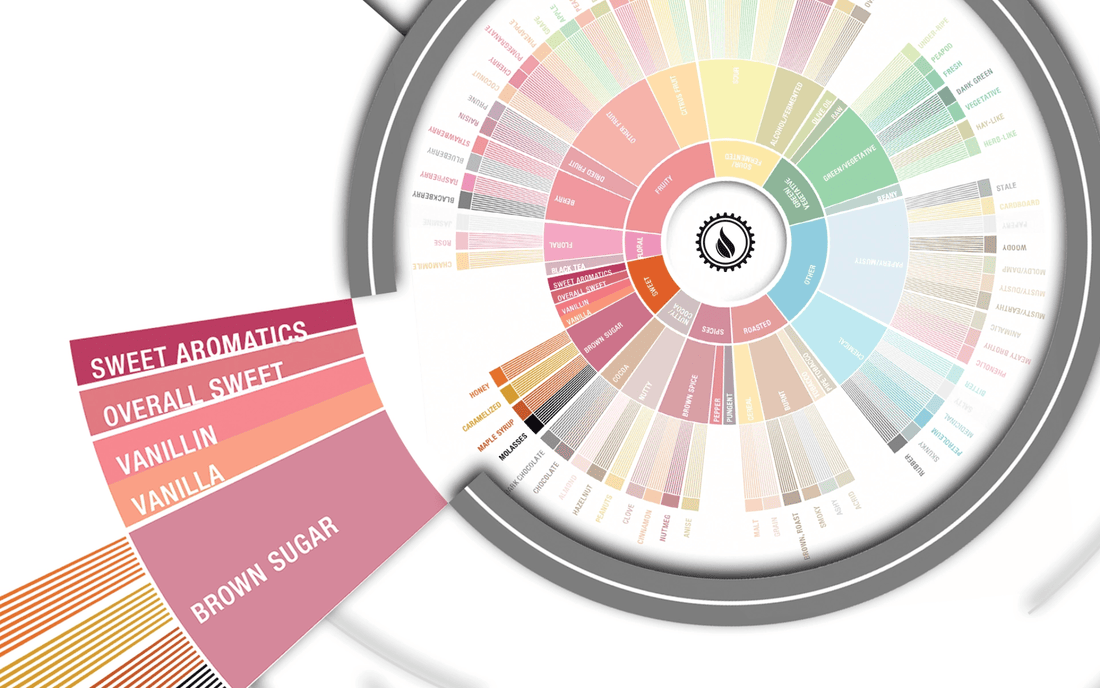
Deep Dive: Sweet Flavors in Coffee
Sweet notes are often the first tasting descriptors that new specialty‑coffee drinkers recognize. Yet in coffee, sweetness does not come from sucrose; it stems from aromatic molecules created during roasting. The Sweet segment of the Specialty Coffee Association’s flavor wheel includes brown sugar, caramelized sugar, maple syrup, molasses, honey, vanilla and general sweet aromatics. These descriptors evoke food memories that help tasters articulate what they’re experiencing in the cup.
How Sweet Flavors Develop
Sweet aromatics are primarily products of non‑enzymatic browning reactions. The Maillard reaction between sugars and amino acids produces caramel, nutty and toasty compounds, while caramelization (the breakdown of sugars) creates maple, molasses and buttery notes. Compounds like furanones lend caramel and nutty aromas. Although green coffee beans contain only small amounts of sugar, roasting transforms other molecules into volatile aromas that our brains interpret as sweet. Light to medium roasts highlight these aromatics before bitterness takes over; over‑roasting destroys them.
The Flavor Wheel’s Sweet Descriptors
- Brown sugar: Deep, round sweetness with a molasses undertone. Often associated with medium roasts of single origin coffee from Central America.
- Caramelized: Warm, cooked‑sugar notes without bitterness; common in coffees roasted slowly to medium level.
- Maple syrup and molasses: Woody, dense sweetness tied to higher roast temperatures.
- Honey and vanilla: Light, delicate sweetness derived from early caramelization and aromatic precursors.
Tasting and Brewing Tips
To highlight sweet notes, choose fresh roasted coffee beans and brew them with care. Natural or honey‑processed beans tend to have higher sugar precursors, so small batch coffee roasters often select these lots for their caramel potential. A medium roast will preserve sweetness without introducing harsh bitterness. In brewing, aim for pour‑over methods like V60 or Chemex and avoid over‑extraction. Keep your water just off boil (around 200 °F), and taste the coffee as it cools—sweet notes often become more pronounced at lower temperatures.
Why It Matters for Specialty Coffee Drinkers
Understanding sweet flavors helps you appreciate the best specialty coffee beans and choose a coffee subscription box that matches your palate. It can guide you when shopping the best coffee beans online or deciding on a specialty coffee subscription for home brewing. A craft coffee roaster or small batch coffee roaster uses the flavor wheel to calibrate roast profiles that highlight caramel or honey characteristics.
For a broader overview of how the flavor wheel works, read our complete Coffee Taster’s Flavor Wheel piece. And if you want to taste coffees with rich sweetness, check out the offerings at Steel Oak Coffee.
